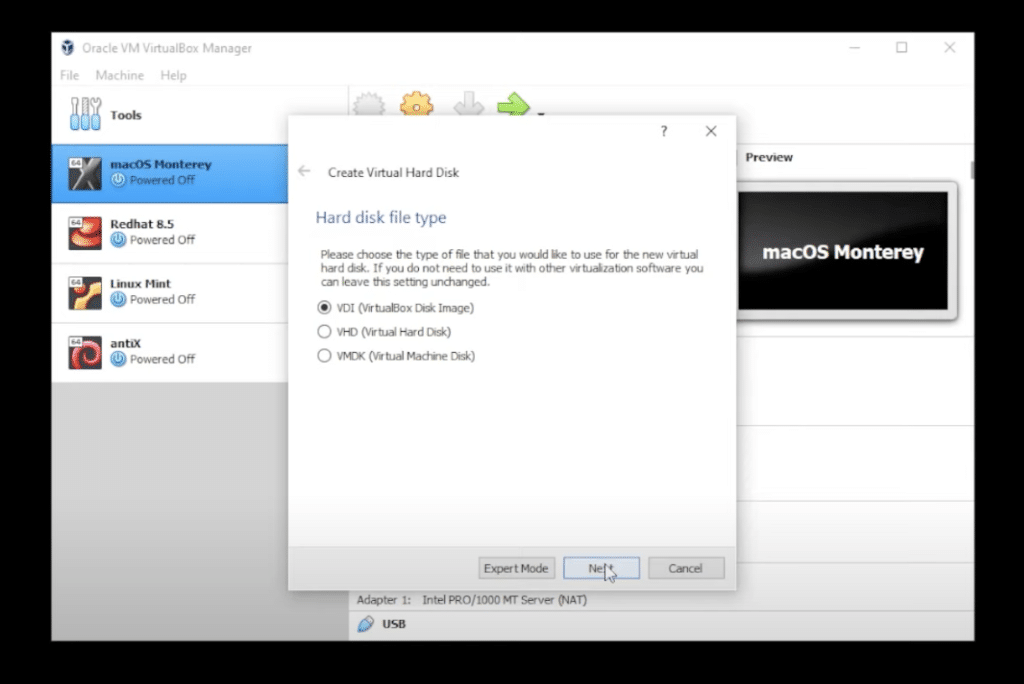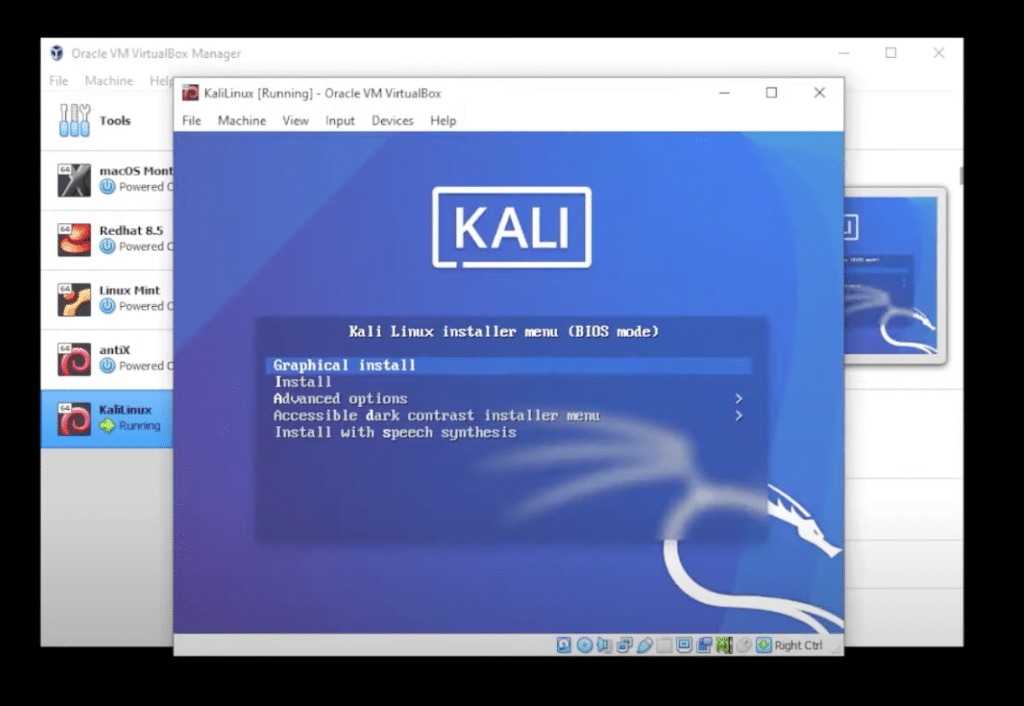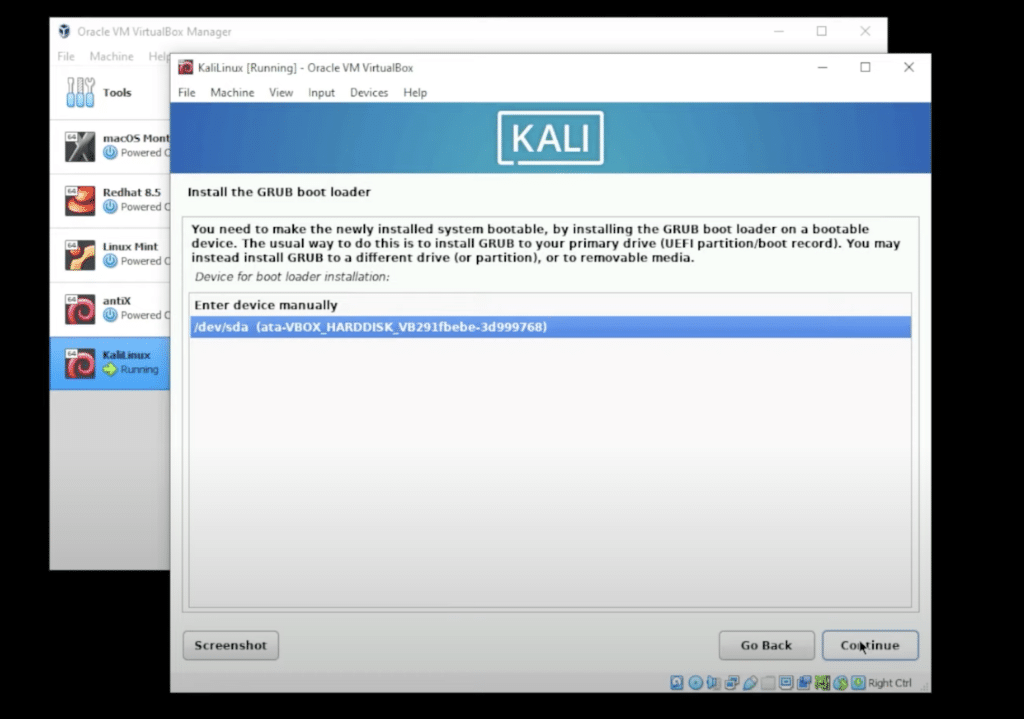Kali Linux is a Debian-derived Linux distribution designed for digital forensics and penetration testing. The latest version of Kali Linux, 22, is now available for download.
This release has some major updates in the tools and packages. It also includes the new kernel 4.19.0-kali2 which brings many improvements to the system’s performance and security. The ISO image size has been reduced by over 700MB, so it should now be easier to fit on a DVD or USB stick if desired.
Table of Contents
Install Kali Linux version 22 VirtualBox | Step by Step Guide
In this tutorial, we will show you how to install Kali Linux version 22 VirtualBox.
Minimum Requirements
RAM: 2GB (4GB is recommended)
20GB of free disk space (40GB is recommended)
CPU: 2 cores
Kali Linux ISO
VirtualBox and extension pack
1. Preparing the Virtual Machine
Step 1: Open Kali.org, and click on the download button. You will get multiple options, select the bare metal option and download the ISO file. The size of the file is 2.8GB. You can download the direct files from here: Download Kali Linux for Virtualbox & VMWare

Step 2: Once downloaded, download and install Virtualbox on your Windows PC. Here is a guide that you can use: How To Install VirtualBox 6.1 On Windows 10
Step 3: Install the Virtualbox Extension Package. Use this guide: How To Install VirtualBox 6.1 On Windows 10
Step 4: Open Virtualbox and click add a new virtual machine. Set the following parameters and click Next.
Name: KaliLinux
Type: Linux
Version: Debian (64 bit)
Step 5: In the memory size, select 4GB and click Next.

Step 6: Select Create a Virtual Hark Disk File and click Create.

Step 7: Select VDI (Virtual Disk Image) and click Next.

Step 8: Select dynamically allocated and click Next.

Step 9: For the hard disk space, select 30GB, and then click on Create.

2. Customize the Virtual Machine
Step 10: Click on the System button, go to the Base memory tab under Motherboard, and select 4GB.

Step 11: Then under System, go to the Processors tab and select 4.

Step 12: Go to Display and select 128MB.

Step 13: Click on Storage and inside Storage, you want to select the empty disk, then click on the little disk on the right-hand side. Choose a disk file and this is where you need to go to your Downloads folder, where you’ve downloaded the ISO image file, select the ISO image file and then click on open.


Step 14: If you want to make any other changes to this virtual machine, you can do that right now, and then when you’re done you can click on the OK button.
3. Starting the Virtual Machine
Step 15: Go to VirtualBox Manager and make sure that Kali Linux is selected and then click on the Start button.

Step 16: Once the installation has started, you will get an installer menu. Select Graphic installation and hit enter on your keyboard.
Step 17: In this installation, I will be using a lot of the default North American settings. If you want to customize this to your region, you can go very specific to your region right now and select the language and settings for that.
Step 18: Leave the hostname as the default, which is Kali, and click on continue.
Step 19: You can leave the domain name empty and click on continue.
Step 20: Fill in the user name and click on continue.
Step 21: Set up your password and click on continue.
Step 22: Configure the clock according to your location and click on continue.
Step 23: In the partition disk select Guided – use entire disk option and click on continue. We’ll be leaving the first option here selected and then clicking on continue. Leave the next slide as default and click on continue.
Step 24: Now we’re ready to write changes so click on yes and continue. So now it’s going to install the operating system.

Step 25: Once installed, leave all the options as default and click on continue. If you want to go ahead and install other packages, you can go and do so what we’re going to do right now is we’re just going to click on continue and it’s going to install those packages we had selected.

Step 26: Select the virtual driver and click on continue.

Step 27: Now the installation is complete. Click on the continue button to reboot the system.
Step 28: We’re going to type in our username and password, and it’s going to sign us in.
Congratulations. You have successfully installed Kali Linux 2022.1 in VirtualBox on Windows 10 PC.
Conclusion
So Kali Linux 2022.1 has been installed inside VirtualBox on a Windows 10 PC. I hope you found this article useful.
You can watch a detailed video tutorial below –














